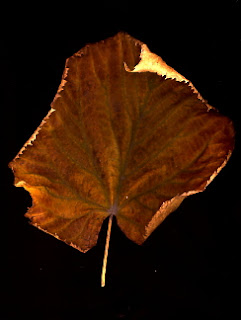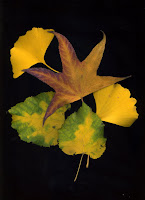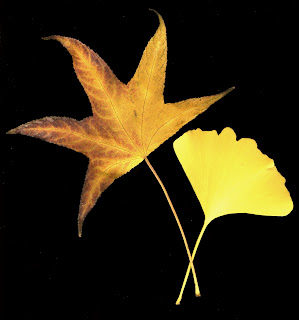Crack the champagne ...
Monday, December 24, 2007
Crack the champagne! Not only is it Christmas, but the Balcony Garden is 100 today. One hundred posts that is. We've been going for 17 months, so that's an average of 5-6 posts per month. But recently it's been more, with eight posts in November and nine, so far, this month. My goal is at least two posts a week, to get to 200 by Christmas next year. We shall see ...
Happy Christmas everyone!
My 2007 Calendar - December
Friday, December 21, 2007
I hadn't heard of it as a medicinal plant before, but checking on the web found that it's a common remedy in Germany for dry coughs. As this is a German calendar, it's not surprising that that was one of the uses mentioned. However, the use that interested me most was as a remedy for cellulite. In case like me you belong to the orange peel thighs group, here's the recipe:
Take a handful of ivy leaves (carefully - the sap can irritate the skin), 10g of rosemary leaves, 10 grams of fennel seeds, half a ginger tuber, 15g of juniper berrries, and the finely chopped peel of one lemon. Put everything into a glass container together with half a litre of cold-pressed olive oil or sunflower oil. leave it in a warm place and shake daily for 3 weeks. Then drain and store in a dark bottle. The massage oil will be ready in 3-6 months and should be rubbed in vigourously daily. Well, that's what the calendar says ...
Hedera helix is of course only one species of ivy, and every species has loads of varieties. Click here to see some of them. Ivy generally prefers slightly alkaline soils - if you're trying to grow it in an acid soil area, add lime. most types are hardy, but some canariensis varieties will succumb to frost. Dark leaved types are fine for growing up exposed northern facing walls, while yellow and silver leaved varieties prefer full sun.
There are various myths associated with ivy. In Greek and roman mythology it is associated with the god Dionysus/Bacchus - the god of wine. When Dionysus was born his stepmother Hera tried to kill him. So his nurses, the Nymphai Nysiades, covered his cradle with ivy-leaves to keep him hidden and safe. Later, when once he had been kidnapped and was being taken to Egypt to be sold as a slave, Dionysus made ivy grow around the oars and sails of the boat he was on, clogging them and preventing the boat from making progress.
Dionysus is often portrayed wearing a wreath of ivy and the association of the plant with the god of wine led to the plant being seen as a cure for intoxication. Greek and Roman drinkers would wear ivy wreaths to protect them from the effects of alcohol - you could give it a try at Christmas I suppose.
The trouble with ivy of course is that its aerial roots can damage brickwork when growing up walls and houses, and can gradually smother trees. In this context, my favourite ivy poem is Hardy's The Ivy Wife. But who knows if he was really talking about the plant ..
And be as high as he:
I stretched an arm within his reach,
And signalled unity.
But with his drip he forced a breach,
And tried to poison me.
I gave the grasp of partnership
To one of other race--
A plane: he barked him strip by strip
From upper bough to base;
And me therewith; for gone my grip,
My arms could not enlace.
To coll an ash I saw,
And he in trust received my love;
Till with my soft green claw
I cramped and bound him as I wove...
Such was my love: ha-ha!
By this I gained his strength and height
Without his rivalry.
But in my triumph I lost sight
Of afterhaps. Soon he,
Being bark-bound, flagged, snapped, fell outright,
And in his fall felled me!
The 2007 Christmas Quiz
Tuesday, December 18, 2007
1. Like most Christmas trees, the Milan tree is a fir. But what's the genus name of the various species of fir tree?
a) Picea b) Pinus c) Abies d) Taxus
2. Did you get a poinsettia this year? I tend to avoid them as they're far too fussy about temperature for my liking. What temperature range can they stand (approximately)?
a) 10-21° b) 6-25° c) 3-30° d) 12-30°
OK, OK - I'll repeat that in Fahrenheit ...
a) 50-70° b) 43-77° c) 38-86° d) 54-86°
3. Harry Potter's wand has a connection with Christmas plants. Why ?
a) He found it under a Christmas tree. b) It's made of wood from the holly tree. c) It derives its magical properties from the sap of the Poinsettia. d) It contains a mistletoe berry.
4. The use of holly as a Christmas decoration derives from its use in the celebrations surrounding the winter solstice by ...
a) The ancient Sumerians b) The ancient Greeks c) The Celts d) The Romans
5. There are many species of mistletoe and a different species is used in the US at Christmas to the species used in the UK. Which is which?
a) Viscum album b) Phoradendrum serotinum
6. Brussel sprouts, a traditional part of Christmas dinner, are very good for you. Why?
a) They're high in Vitamin C.
b) They contain folic acid.
c) They contain vitamin D.
d) They're low in fat and are only about 10 calories each.
How did you get on ? Scroll down and you'll find the answers. While you're doing it I ought to say that the photo was taken by my son - he seems to get a lot more out of the camera than I can. Thanks sweetheart.
A bit more ...
OK- here you are.
Monday, December 17, 2007






Christmas Tour Part II: Come inside for a peek at some of our decorations for  Christmas. This will be our first Christmas in several years with all our kids at home.
Christmas. This will be our first Christmas in several years with all our kids at home.
Sunday, December 16, 2007






Christmas tour part I: Considering hubby has been away during the time to decorate for Christmas, I have had limited time and muscle for the task at hand. Part I consists of a peek at our winter wonderland just outside our front door.
Giant waterlilies and smelly flowers
This is really old news but I've only just caught up with it. The BBC has teamed up with YouTube and now has a site dedicated to showing short clips of its own programmes. Browsing through them the other day I came across a collection of clips, each 2-4 minutes long, from
Neither of the two are exactly the sort of flower I could put on the balcony - the waterlilies have leaves six foot across and the Titan Arum a flower which is nine feet high - with a smell that I think the neighbours might well complain about. Luckily for us, if not for David Attenborough, smell doesn't come over on video. Happy viewing.
Read more...
Gardener's Bloom Day - December
Saturday, December 15, 2007
Because of that, I have started covering things up. And by the end of this week it will be complete, with everything put to bed for at least a month. The first week in January is usually the coldest week of the year here, so better safe than sorry.
Visiting 'natural' gardens
Tuesday, December 11, 2007
Wonderful areas rich in biodiversity are natural gardens, and great places to visit. We like to travel to interesting natural areas around the world, focusing on areas that are rich in natural history and culture. We're off for semester break in South India this year; look for travelblog posts (if I have the opportunity)!
Read more...I've been tagged ...
Monday, December 10, 2007
Leslie of Growing a Garden in Davis has tagged me to write eight things that I'm make me happy. So here goes. I've decided to leave out the personal stuff - if I gushed too much my son would die of embarassment; if I didn't my husband would divorce me. I'll concentrate instead on gardening.
1. Early mornings in spring when I rush out on the balcony and find that my seeds have germinated overnight and are poking their little heads through the soil.
2. Finding new plants that I've never seen before - like my monster from the last post.
3. Sitting on the balcony eating cornflakes at about five in the morning in the middle of summer, the only time of the whole day when the temperature and the humidity are bearable, listening to the dawn chorus and looking at my plants with no-one to disturb me.
4. That day in June when suddenly everything is in flower and looking its best.
5. Neighbours saying "How do you manage to have such a lovely balcony?" (OK, not the most noble of the things on the list, but a least you know I'm being honest.)
6. The fact that when I've seen seed pods or plants I'd like a cutting of in other people's gardens, and asked if I can take them, no-one has ever, ever said no or been in any way offended. On the contrary, it's usually meant spending the next twenty minutes having a guided tour of the garden chatting about where they got the plant, how it's performed for them, what else they've got in their garden - and being offered four or five more things that I'd not even seen from the road.
7. Seeing plants which I've brought from my London garden, either as seeds or cuttings, growing on the balcony. And, when I go to London, taking seeds and cuttings from the balcony to plant there. It makes me feel constantly connected to both places.
8. Sunday mornings, which is the time I work on most of the "maintenance" jobs - deadheading, repotting and so on. After I've been out on the balcony about half an hour, I'm suddenly relaxed, destressed and yet concentrated to an extent that doesn't happen much at other times.
9. In winter, looking back through my photos at flowers from previous years and seeing ones I'd forgotten about - like the one in the photo above
Wow - that's nine and it was only supposed to be eight. When I started writing I'd only come up with three, and thought I'd probably be giving up before the end. But now the part I don't like which is having to tag other people. Perhaps we should all put a section in our sidebar saying I love (or hate) being tagged. So I'm not going to - instead, if as you've been reading through this you've thought Yes, me too, then consider yourself tagged. You can start with the common feature and then add seven more - we'll turn it into a chain meme. If you decide to, leave me a comment and I'll come and find out what we have in common.
And now I'm heading over to May Dreams Gardens. Carol posted on this theme several days ago, but I've purposely been putting off reading the post so that I wouldn't be influenced by her ideas when I finally got round to writing this. We shall see if there's anything we share...
Monster from the deep...
Saturday, December 8, 2007
In case you don't recognise it, it's Eremurus or foxtail lily. When I saw it I had no idea what it was but couldn't resist asking about it. And once I did, I was hooked. Tall pink flower spikes from April to August, loves sun but needs cold winters. Should be just right for the balcony. Apparently though it doesn't like being moved, so I shall have to decide on a permanent container from the beginning - and then just try and plant other things around it. I seem to have a mental block on the name though, and keep having to go and look it up. So as far as I'm concerned, from now on it's just the Octopus Plant.
As for the others, I've never been particularly keen on tulips and this is really the first time I've tried. With limited space available, some things have to go - and I usually prefer daffodils. But my son talked me into these, and I must admit I was quite attracted. The fritillaria I've been wanting for a while, and the allium I tried a couple of years ago but managed to drown. Note to myself, water sparingly this time.
Sunrise and crescent moon
Tuesday, December 4, 2007
 I looked out the breakfast room window this morning and caught a glimpse of the crescent moon framed by clouds tinted a rich purple by the sunrise. By the time I took this picture, the color had faded somewhat, as the light brightened.
I looked out the breakfast room window this morning and caught a glimpse of the crescent moon framed by clouds tinted a rich purple by the sunrise. By the time I took this picture, the color had faded somewhat, as the light brightened.
It reminded me of sunrises in the tropics, as we seldom have such vivid early morning color.
You've been googled ...
Some of the queries did link straight to posts I could identify. A lot of people seem to be searching for the book Curious Incidents in the Garden at Night-Time
Not surprisingly, given the time of year, a lot of people are currently searching for Christmas Quiz, and ending up at the quiz I did last year. I was slightly puzzled by the person who wanted a Christmas Quiz for Older People. Since then I've been racking my brains to try and think of suitable Christmas questions for the over fifties. What's the worst weather for Father Christmas' arthritis? perhaps. Rain, dear. ... And talking of Christmas Quizzes, I've decided that the Balcony Garden Christmas Quiz should become a tradition, so watch this space. But don't think you're going to get away with the easy-peasey questions we had last year. I've got some goodies up my sleeve for this one ...
Back to the search engines. Without doubt the best query of all was from someone who wanted Sex in the beatiful grden (sic). Whaat? if you tried having sex on my balcony you'd find yourself performing to an audience of the three hundred or so people who live in the block directly opposite. I puzzled about this one for a bit - but yes, I then realised I had written about sex. I wonder if the person who googled was really interested in the mating habits of the leopard slug ...
Weird weather we've been having...
Sunday, December 2, 2007
But the strangest event this month was towards the middle of the month when the foehn suddenly hit. The foehn is a warm wind that comes across the mountains - warm because as the air drops down the side of the mountain, the increasing atmospheric pressure heats it up. It produces gusts of wind than can get quite strong. this time it got up to around 90km per hour in some places, and was about 80 when it hit Milan.
It had been fine when I went to work in the morning - but when I came out at lunchtime I had to fight my way through it to get home to my son, who was home from school sick that day. The wind had blown away all the smog, so there was a bright blue sky, warm sunshine and in the background you could see the Alps - something which only happens when it's windy enough to clear the pollution. The strongest of the winds happened just after I got home. The trees in the garden had just reached the peak of their autumn colours, so of course the leaves were ready to come off, and there was what would have been a wonderful photo of trees bent double and the air full of a stream of leaves blowing from left to right across the garden. Needless to say, the batteries in my camera were dead.
When I next went out on the balcony it was ankle deep in leaves, and I'm still finding them tucked behind the occasional pot.
Will the warm weather go on? The forecasts say no and that we're not going to have a mild winter again like last year. We'll see. The temperature has dropped, but it was still nine degrees out there this morning. If we do get normal temperatures, I should need to cover everything with fleece in about ten days. last year I didn't really need to at all, and although I did cover things as a precaution while I was away for Christmas, the fleece came off pretty soon afterwards. This year who knows. We shall see.
Rooted cuttings and winter flowers
Saturday, December 1, 2007
 I hadn't rooted cuttings much before, and I thought I'd try some Spanish lavender (lovely flowers most of the summer) and an amazingly hardy red climbing rose in front of the house.
I hadn't rooted cuttings much before, and I thought I'd try some Spanish lavender (lovely flowers most of the summer) and an amazingly hardy red climbing rose in front of the house.
(The lavender image is from a fellow blogger from Alabama: somethingthatwontcompute.blogspot.com.)
The rose has flowered season after season with no help from us; it scrambles up an old dogwood tree, and then flowers and flowers. Drought didn't stop it; light frosts are shrugged off. It's amazing. We don't water, fertilize, spray -- it's definitely a rose to grow! But since it pre-dates us, and is of no recognizable variety (without doing any research), I thought cuttings would be easy enough to try.
So in late summer, I took tip cuttings of the lavender and of the rose (this was in the depths of our dreadful August heat), dipped them in some Rootone that I'd had for awhile, and stuck them in some pots filled with half and half vermiculite and potting mix. I checked them a bit periodically, and by late October, both had started to produce decent roots, the lavender most vigorously.
I left the lavender cuttings in the pots, but transplanted the rose cuttings (totally leafless) to a nice rich bed next to the radicchio. I figured they'd be buffered from cold weather better.
I checked all of them today, and hooray! They all seem well-rooted, and hopefully I'll have both Spanish lavender and rose cuttings to transplant in the spring.
Happy Belated GBD
Friday, November 30, 2007
Campanula. these have recovered from some slight ill-treatment in the early autumn - they got shoved behind something, and I forgot about watering. They lost all their flowers but are now doing well again.
Alyssum. I sometimes curse my alyssum because it takes over the containers. But it's worth it to have it still going at this time of year.
And now - the pièce de résistance - marigolds. In December, give or take about five hours. They'd stopped blooming and I was about to throw them away when I saw they were covered in buds. And since the middle of the month more and more have been coming out.
Needless to say we've had an unusually mild November - but that can be the topic of the next post.
Read more...
Invasion of the Giants
Wednesday, November 28, 2007
... and look at it now.
It does of course solve the problem of what to put in that corner. But if I leave it there, will it be invading the bedroom by this time next year? The only other solution which comes to mind is digging it up, splitting and repotting it, and giving it to people as Christmas presents. The ones I don't like, obviously.
Drought, woodpeckers, bats, and rocks
Tuesday, November 27, 2007
It hasn't been a week for gardening -- we finally got some rain (half an inch last Friday) and almost 7/10 of an inch yesterday. In the drought we're in, counting every drop is important. We're worrying about the long-term forecast; my colleague sent an e-mail about hearing that the National Weather Service has projected drought through next summer. It's cool now, but any soil recharge we get is great. Here in SC, we're (at least as a public garden) thinking about whether we can water next summer -- I'm expecting that we'll have mandatory restrictions like our neighboring states of Georgia and North Carolina.
What's been fun, however, is the parade of birds through our home garden. They're definitely enjoying the water I put in the birdbath and large dishes on the ground.
In recent school programs at the botanical garden where I work, I've enjoyed pointing out woodpeckers, bat boxes (we have bats that roost in the trees, and use the boxes a bit), and all the acorns, hickory nuts, and leaves that are falling now. Today's programs focused on changes in the landscape, erosion, and geology -- my knowledge of geology is not vast (minimal, actually), but fortunately, my descriptions of erosion, soil formation, and stream banks captivate third graders, and my colleagues at the Geology Museum provide the important information about rocks and minerals that 3rd graders are supposed to learn about. I get to be about exploring the geological landscape of the Garden.
These kids, however, seemed to love being in the forested area along the Garden's creek the best. Seeing squirrels is a highlight. One of them asked me (I had told them that one of the best things about what I do was that I get to explore the Garden with kids like them), did I like to go on adventures? Well, of course, there are adventures open to us everyday, and many more to go on. But I do hope that I encourage these kids to further explore the world around them, both in their backyards and farther afield.
November - a puzzle
Sunday, November 25, 2007
So - sticking to traditional camomile, what's it good for? Camomile has been used medicinally since the time of the ancient Egyptians, who - because of its bright yellow centre - associated it with the sun god Ra and considered it to be sacred. It's also mentioned by Hippocrates, Galen and Pliny the Elder. The most important active ingredient, found in the flower heads, is the essential oil chamazulene. Camomile tea is well known as an "unwinder", useful as a pre-bedtime drink to help you sleep. This extract is from a poem by Katherine Mansfield called Camomile Tea :
How little I thought, a year ago,
In the horrible cottage upon the Lee
That he and I should be sitting so
And sipping a cup of camomile tea.
Here in Italy, it's frequently given to children just before they're put to bed. It's also used widely to lighten fair hair - even in commercially produced shampoos and hair treatments. The calendar suggests using it for a variety of other things including stomach problems.
 And if you remember Beatrice Potter's The Tale of Peter Rabbit, when Peter had stomach ache after gorging himself on the lettuces in Mr McGregor's garden, his mother gave him "a teaspoonful of camomile tea", and put him to bed.
And if you remember Beatrice Potter's The Tale of Peter Rabbit, when Peter had stomach ache after gorging himself on the lettuces in Mr McGregor's garden, his mother gave him "a teaspoonful of camomile tea", and put him to bed.
The name matiricaria apparently derives from the Latin for womb, and was given to the plant because of its widespread use in treating women's gynacological complaints, in particular menstrual cramps. This is also the basis of its common German name Mutterkraut - mother's herb.
But that's not all. The calendar says it's also useful for a load of things that I can't find a translation for, while on the web it's suggested for everything from arthritis to healing wounds. And according to one site it's a carminative, cholagogue, diaphoretic, and emmenagogue. Well, now you know. And I thought I was having problems with the German ...
But according to some research carried out in Britain and reported by the BBC, there's sound scientific evidence for many of the traditional uses. Five cups a days for a fortnight will apparently also ward off cold symptoms (should you ever have a cold that lasts a fortnight, that is).
Even if, like me, you loathe camomile tea, it seems that matricaria recutuita is well worth growing in the garden. It is said to keep neighbouring plants free of pests and diseases, and to have a curative effect on sick plants around it. It's especially useful if grown in the company of other herbs containing essential oils - basil, marjoram, thyme and so on.
It can also be used to make a lawn, as an alternative to grass, which lets out a characteristic fragrance when walked upon or cut. In Mary Wesley's novel, The Camomile Lawn, the lawn becomes a symbol of tradition, permanence, and the youth and innocence of the characters as they meet on holiday in Cornwall, all of which is lost they meet again after the Second World War.
Matricaria recutita is best sown in the autumn or spring, in light sandy soil. It's a sun lover, which needs little fertilisation. And even if you don't want to drink the tea, it's worth collecting the flowers as you can spray it on new seedlings as a fungicide to prevent damping off.
Another good reason for collecting the flower heads is that, if you don't, it will self-seed and before long you'll find it everywhere. As Shakespeare said in Henry IV Part One :
For though the camomile, the more it is trodden on the faster it grows,Yet youth, the more it is wasted, the sooner it wears.
Read more...White-crowned sparrows?
Tuesday, November 20, 2007
Leaving for work this morning, rustling sounds in the frost-bitten swamp sunflowers caught my attention. I'd seen some goldfinches foraging for seeds there last weekend. They're dull in color now, nothing like their spring and summer colors. But these birds were foraging on the ground, poking around in the leaf litter. There were probably 5 or 6 of them in a small area, joined by a Eastern Towhee kicking the leaf litter.
They scuffled around a bit like the towhee, kicking the litter, bringing up seeds to eat. Their distinctive striped heads seemed to fit white-crowned sparrows, but I didn't have my binoculars with me as I left the house!
A warm fall day
Monday, November 19, 2007
It was absolutely lovely in the garden this morning; the fall color is still bright, as the leaves come down and sprinkle the landscape with color. But it's unusually warm, the kind of "Indian summer" day we used to have in September and October, not in mid-November. On the front steps, there was a sudden emergence of hundreds of winged insects -- they looked like ants and I'll have to figure out what they were. In any case, it's not the time of the year to be hatching!
I did my favorite program this morning for a garden club in a nearby city (this permutation was Gardening for Nature). Actually the location was in a semirural area west of town. In what used to be rolling farm fields, subdivisions and shopping areas have popped up and lakeside houses now dot the nearby shore of Lake Hartwell. They were a great group, amazingly energetic with their outreach and volunteer activities. It was not only gardening and planting activities that they were involved with, but also community action projects. They mentioned a local hospital that's created a garden area that patients receiving chemo could look at through the expansive windows. What a lovely thing -- when my mom was in extensive rehab, the ability to go outdoors, and visit in the courtyard garden at the hospital was so significant to both of us, but probably to me most.
Red-bellied woodpeckers
Saturday, November 17, 2007
We have an old Paulownia (Princess tree) in the back that's not in great shape. We haven't bothered much with it, since we figure it's eventually going to die, so not worth it to take out before then. Paulownias are tremendously weedy in many areas, but this one, probably since it's on its own, is not producing viable seeds, at least there's no sign of seedlings.
So when the powerline trimmers came through, I wasn't too concerned about it, as long as it looked halfway decent. I was out planting some last winter color things (Violas and kale) & started hearing a rhythmic call coming from the Paulownia. It turned out to be a male red-bellied woodpecker foraging, punctuating his activity with calls.
First hard freeze
There was ice on the birdbath this morning, reflecting the first good freeze after several hard frosts. The strong winds yesterday brought down many leaves, but many trees are still lovely. The fothergilla in the back has turned bright orangey-red, quite spectacular.
The ginkgo behind the garden shed lost all of its leaves this morning in one graceful pool - ginkgos make a habit of that.
Garden Bloggers' Carnival : Day Four
Friday, November 16, 2007
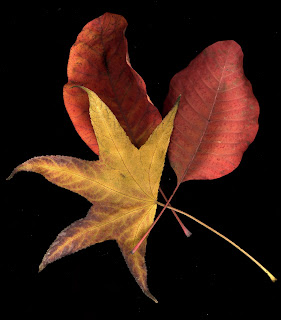
It's the last day of the Garden Blogger's Retro Carnival, and the theme is Added Value - or Ten for the Price of One.

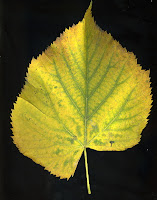

Andee, the gardener in Chacala also linked to an archive page. Go down to the bottom to read about Learning to Garden in Chacala – and some small problems in cross-cultural communication. While you’re getting there - enjoy all the photos.
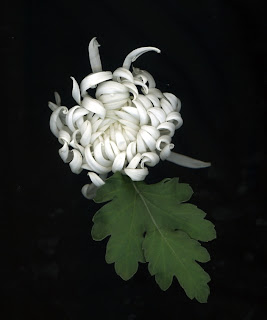
Carol of May Dreams Gardens has only linked to one post, but in it she links to the ten posts which she feels serve best as an introduction to her blog. So ten for the price of one again!
